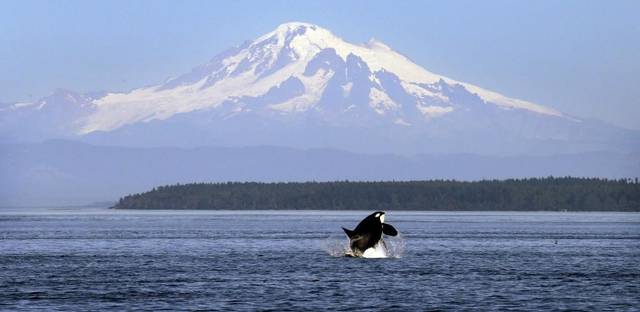 Sergeant Russ Mullins knows it’s only a matter of time before people start unpacking the drones they received for Christmas and start launching them over the water. The state Department of Fish and Wildlife agent just wants to keep the remote-controlled aircraft away from Washington’s endangered population of orcas, also known as Southern resident killer whales.
Sergeant Russ Mullins knows it’s only a matter of time before people start unpacking the drones they received for Christmas and start launching them over the water. The state Department of Fish and Wildlife agent just wants to keep the remote-controlled aircraft away from Washington’s endangered population of orcas, also known as Southern resident killer whales.
“It’s a growing trend we are trying to head off at the pass, so to speak,” said Mullins, whose enforcement region includes the San Juan Islands in the northern Puget Sound. While Mullins said Washington state has issued only two tickets for drones flying too close to orcas, officials worry that rising use of drones by hobbyists and photographers could lead to one of the devices crashing into one of the endangered animals, or creating noise or other disturbances that would disrupt the whales’ habits.
“There’s no doubt in my mind that they are aware of the presence of drones,” said Michael Harris, who just finished a five-year stint as the executive director of the Pacific Whale Watch Association. “How much it alters their behaviour, we don’t know yet.”
A bill introduced in advance of the 2017 legislative session would clarify state law to say that drones, also known as unmanned aerial systems, can’t come within 200 yards of Southern resident killer whales. The 200-yard buffer already applies to boats, vessels and other objects that might approach the animals. However, in a 2015 case in San Juan County, the attorney for a drone-operating photographer argued the word “object” may not be specific enough to cover drones that fly near orcas. The prosecutor later dropped the case. “The question was, does that encompass objects in the air or in the water?” said Randall Gaylord, the San Juan County prosecutor whose office ultimately dismissed the $1,025 citation.
An opinion from the state Attorney General’s Office — issued Friday at Gaylord’s request — said the state’s prohibition on objects coming within 200 yards of orcas should also be interpreted to apply to drone aircraft.
